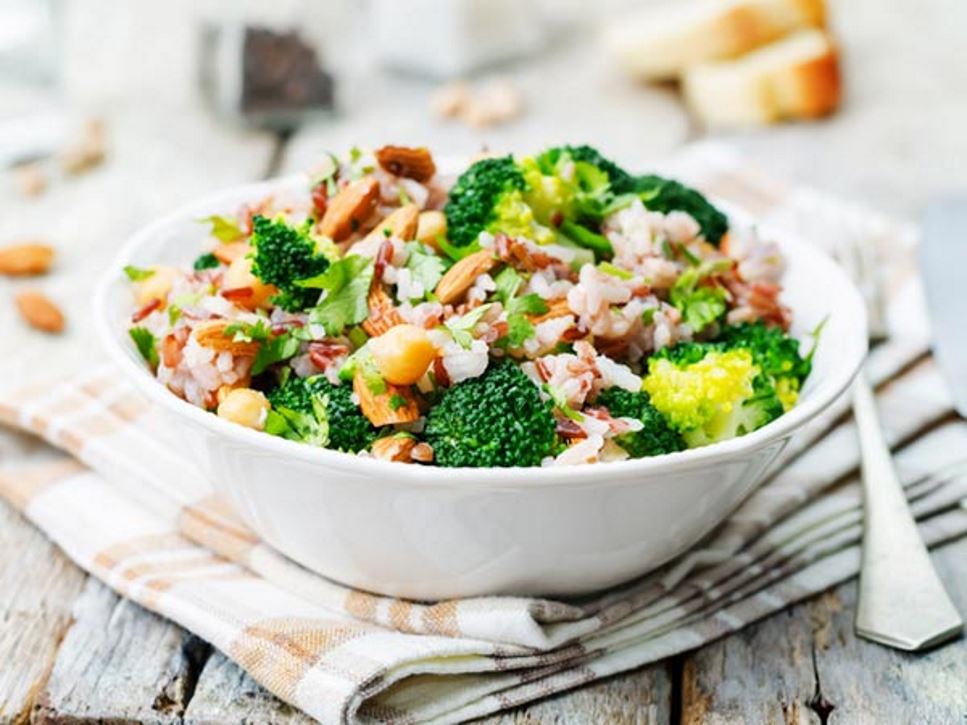Think you can't stop hypertension, or high blood pressure? You might be able to if you follow a healthy eating pattern. Dietary Approaches to Stop Hypertension (DASH) is a style of eating that encourages fruits and vegetables, beans, nuts, seeds, whole grains, fish, poultry and low-fat or fat-free dairy products and limits foods and beverages with added sugars, red meats and sodium.
Originally designed as an eating plan to lower blood pressure, DASH has many advantages for health and may help to reduce cardiovascular risk factors. This heart-healthy eating plan, which focuses on whole foods, is higher in nutrients that have been shown to lower blood pressure, including dietary fiber, potassium, calcium, magnesium and protein, and lower in saturated fats, trans fat, cholesterol, added sugars and sodium. It can be a way of eating for the whole family, and may reduce the risk of stroke, heart disease and kidney stones.
Here's a look at the basics of the DASH eating plan and the benefits of a healthy lifestyle.
Get Your Fruits and Veggies
Fruits and vegetables are natural sources of potassium, which is important in managing blood pressure. Some studies show that low intakes of potassium may be related to hypertension. You can increase your intake of this essential nutrient by making half your plate fruits and vegetables.
Go Nuts
Unsalted nuts are an excellent source of unsaturated fats, which may help with lowering “bad” (LDL) cholesterol when they replace sources of saturated fat. Rich in antioxidants, nuts contain compounds that may reduce damage to blood vessels. These compounds also help keep blood vessels healthy for unrestricted blood flow.
Choose Low-Fat or Fat-Free Dairy
Calcium is important not only for bones, but also for blood vessels. Dairy foods are rich in calcium. Choose low-fat or fat-free milk and dairy products in place of full-fat options or opt for calcium-fortified soymilk.
Limit Sodium and Saturated Fat
The DASH eating plan limits sodium to 2,300 milligrams per day, although additional benefits may be seen for adults who limit sodium to 1,500 milligrams.
Studies also have shown that a diet low in saturated fats can decrease the risk of heart disease and hypertension. Plant foods are a great way to get nutrients, including protein, without too much saturated fat. Beans, lentils and tofu are excellent choices.
Be Physically Active and Limit Alcohol
Physical activity is important. It promotes heart health and overall fitness, so you aren't out of breath when climbing a set of stairs. Both aerobic and muscle-strengthening exercises are recommended to help improve blood pressure. Regular physical activity also may help to increase levels of “good” (HDL) cholesterol. Aim for at least 150 to 300 minutes of moderate-intensity physical activity each week, along with muscle-strengthening activities two or more days per week.
Finally, adults of legal drinking age should limit their alcohol consumption. Men who choose to drink should limit their alcohol intake to two drinks or less per day and women should consume no more than one drink per day. One alcoholic drink is equivalent to either 12 ounces of beer, 5 ounces of wine or 1.5 ounces of 80-proof liquor. Reducing alcohol consumption may reduce blood pressure. However, avoiding alcohol is associated with the most health benefits.
References
Find a Nutrition Expert
Looking for credible nutrition information and recommendations? The Academy of Nutrition and Dietetics' network of credentialed food and nutrition practitioners are ready to help!

